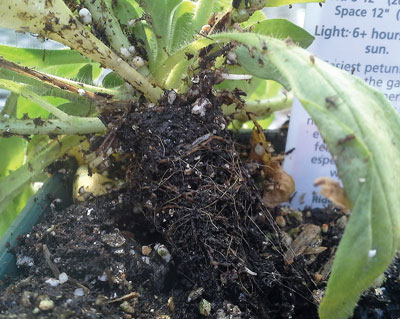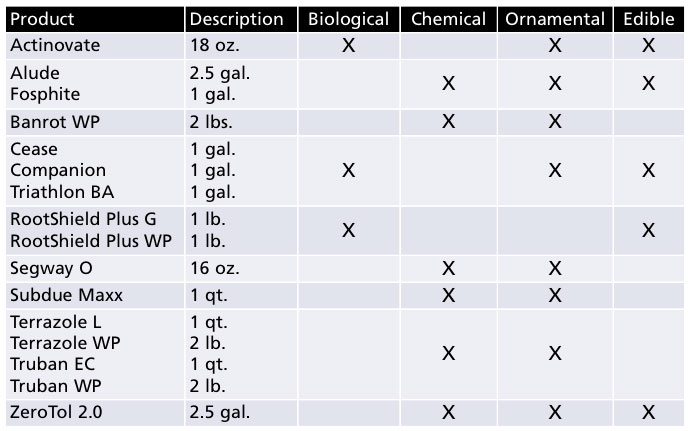10/1/2018
Rooting Out Root Rots
Joanne Lutz
Soil-borne pathogens cause significant losses to ornamental and vegetable crops in greenhouses and nurseries worldwide. Pythium and Phytophthora are among the most common of these pathogens. Such pathogens are commonly referred to as “water mold” pathogens rather than true fungi because they’re associated with wet conditions, wherein they produce swimming zoospores. These pathogens lead to root and crown rots, and can cause disease if splashed onto plant foliage.
Both Pythium and Phytophthora are natural soil inhabitants and gain access into production areas via irrigation water, soil, airborne spores, insects, weeds, equipment and footwear. They also can carry over in crops harboring the pathogen.
Pythium is characterized by brown patches on roots. A diagnostic tool for Pythium is the ability to gently slide the outer root tissue off the root, leaving only the inner cortex. Infected plants will generally show mild-to-severe yellowing prior to collapse. Optimum soil temperatures for Pythium vary with the pathogen species: P. aphanidermatum is 95F (35C), P. irregulare is 86F (30C) and P. ultimum is 77 to 86F (25 to 30C).
Pythium is an opportunistic disease. It easily spreads through water and tends to infect plants that are already subject to stress. Fungus gnats are also known to spread Pythium in the greenhouse environment.
Cultural management is key in reducing Pythium risk:
• Produce crops within their ideal temperature range.
• Avoid strong wet/dry media moisture cycles.
• Avoid excessive fertilization that can contribute to high media-soluble salts (EC).
• Practice strong sanitation prior to and during crop production.
• Be sure to filter or treat recirculated water.
 Pictured: Pythium on petunia roots with fungus gnat larvae.
Pictured: Pythium on petunia roots with fungus gnat larvae.
Phytophthora is a fast-moving pathogen. It’s characterized by decline symptoms, including leaf yellowing, stunting, wilting and blighting of petioles. This pathogen often leads to plant death in a short period of time. Root symptoms are similar to Pythium except for root sloughing. Examination by cutting into the crown area may reveal a reddish brown discoloration and dark streaks moving up the vascular system.
Phytophthora onset is favored by high soil moisture and warm soil temperatures. Like Pythium, optimum soil temperatures will vary with the Phytophthora species. Phytophthora overwinters in soil/media mainly as dormant resting spores (oospores or chlamydospores).
We’re fortunate to have a range of choices, both chemical and biofungicides, labeled to prevent and control Pythium and Phytophthora pathogens when applied as drenches. Biological fungicides  must be applied preventatively, as they have no curative properties. These fungicides fit nicely into a traditional IPM program as being compatible with most chemical fungicides if needed. Traditional chemical fungicides may be applied preventatively, as well as curatively. All labels must be examined carefully for crops being treated and for application intervals.
must be applied preventatively, as they have no curative properties. These fungicides fit nicely into a traditional IPM program as being compatible with most chemical fungicides if needed. Traditional chemical fungicides may be applied preventatively, as well as curatively. All labels must be examined carefully for crops being treated and for application intervals.
Consult your supplier for mode of action (MOA) information and other product details to help you make good fungicide rotation choices. Pesticides other than those mentioned here may also be legal, safe and effective. GT
Joanne Lutz is a GGSPro Technical Support Representative for Griffin. She can be reached at ggsprotech@griffinmail.com.